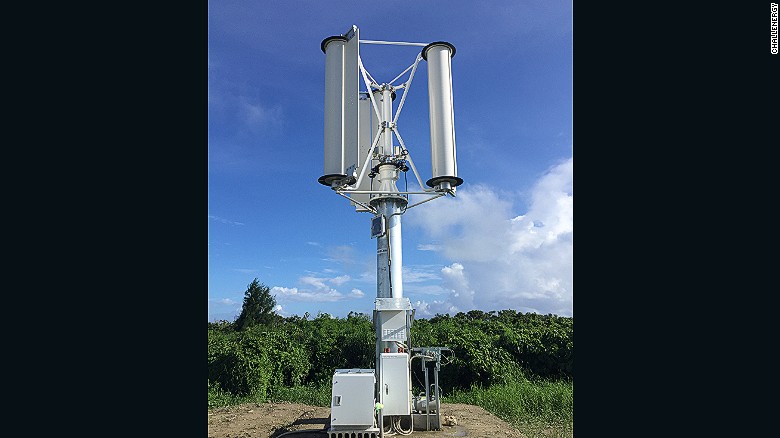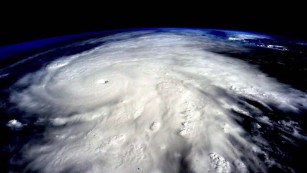Storm chasers: the typhoon turbine that could power Japan for 50 years
"Typhoons are normally nothing but a disaster," says Atsushi Shimizu.
But that's not the case for this Japanese engineer, who believes these violent forces of nature could solve Japan's green energy problem.
Shimizu has invented the world's first typhoon turbine. A robust, egg beater-shaped wind turbine, designed not only to withstand the incredible force of a tropical cyclone, but also to harness it.
A mature typhoon produces a level of kinetic energy "equivalent to about half the world-wide electrical generating capacity," according to the Atlantic Oceanographic & Meteorological Laboratory.
The energy from one typhoon, says Shimizu, could power Japan for 50 years.

Challenergy's typhoon turbine
End of an era
Before the Fukushima Daiichi nuclear disaster in March, 2011, nuclear power was expected to account for 60% of Japan's primary energy by 2100.
But the devastating earthquake and tsunami, which killed 19,000 people, also caused three nuclear meltdowns and derailed that plan.
Today, Japan imports about 84% of its energy requirements, and many of its nuclear reactors are now dormant, as the country shies away from this energy source.

Typhoons vs. hurricanes: What's the difference?
Attempts at utilizing wind power have been largely unsuccessful.
"For decades, Japan has brought in European-style wind turbines, not designed for typhoon zones, and installed them with no careful consideration -- they've broken almost entirely," says Shimizu.
During Typhoon Usagi, in 2013, for example, eight turbines collapsed at China's Honghaiwan wind farm, in eastern Guangdong, and a further eight were damaged, according to Windpower Intelligence.
Consequently, solar power has been the focus of the Japanese government, and solar panels are now not an uncommon sight on urban homes.
"But in terms of energy," says Shimizu, "Japan actually has a lot more wind power than it does solar power, it's just not utilized."
The country has already seen 6 typhoons in 2016.
"Japan has the potential to be a super power of wind," says Shimizu.
The next superpower
In 2013, Shimizu quit his job, founded green tech firm Challenergy, and won funding to invent a wind turbine "that is unbreakable by a typhoon."
Shimizu and his team made two fundamental changes to the design of conventional wind turbines.
First, they designed an omnidirectional vertical axis that is able withstand Japan's unpredictable wind patterns.

Watch a typhoon blow this car away
Then they incorporated the Magnus effect -- the sideways force that causes a spinning object to deviate from a straight path, like the spin on a penalty kick in soccer.
The Magnus effect offers an unprecedented level of control over the turbine's blades. By tightening the center rod, engineers can adjust the speed of the blades to ensure they don't spin out of control in a storm.
When the Challenergy team last simulated their invention in July 2015, it achieved 30% efficiency. Propeller-based wind turbines typically achieve 40% efficiency, but can't operate in a typhoon.
In July, the first prototype was installed in Okinawa. Now all the Challenergy team needs to test their creation's efficiency in real life is a typhoon.
"I want to install our wind-power generator at the new National Stadium," Shimizu says, of the facility being built for the Tokyo 2020 Olympics. "Or on the Tokyo Tower, because the Eiffel Tower installed a wind-power generator last year at the time of the COP21 (climate summit)."
For Shimizu, it's a service he owes his country.
"Our generation reaped the benefit of nuclear power -- we never experience a power black out because of it," Shimizu says.
"Now we are responsible for changing the future."
News Courtesy: www.cnn.com











